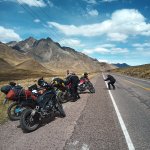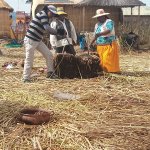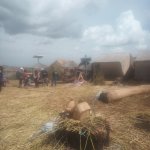Pacific Northwest yetti
Expedition Medic
ITTOG:
Cusco is like that as well, you have ancient (Inca Pre Colombia,) next to post Columbia, Spanish built, next to modern. And it really does get worse. We rode moto’s, cars drive on those ancient brick roads, and they are solid. The new asphalt, concrete? Rubbish, pot holes, falling apart.
Jerry:
I don’t usually do food pics, but it sure was good! I am glad its bringing back memories, it truly is a magical place. I was bummed we could not just spend an entire day exploring every inch. But it was still worth it. We saw many who were doing the Inca Trail, and I am sure its an incredible hike. And I would imagine the people met along the way have some great stories to tell.
Feel free to post and share any stories or pictures you would like! After all, is from others posts and experiences where I learn of places to go. This trip was different from my others, however still enjoyable. And always better than the “someday”. That “someday” can be a dangerous trap of a road to go down.
I look forward to more of your possible insight on other aspects of this trip. Still have more days to post about.
The Deputy:
Interesting you brought that up! There are varying skills of construction here, however almost all still ancient. There are some places where you can tell, UNESCO is actively restoring. * and its still not as good*
In the picture you posted, The building on the left was for someone very important, ( I believe a priest) The upper portion would have been covered by the roof and grasses.
The wall on the right borders a terrace so they used larger stones.
Other places on site (Our circuit, had the buildings of the important folks) where it would have been students, or servants, the construction was more get it done, and less art.
I asked if they used slaves.
And the guide chuckled and said “not in the traditional sense, the kings required work as a tax. So, a commoner would do 3 months of labor, instead of paying tax’s. So, we don’t consider it slavery”. Even though they weren’t paid, once their term was up they could go back to their families and businesses.
Cusco is like that as well, you have ancient (Inca Pre Colombia,) next to post Columbia, Spanish built, next to modern. And it really does get worse. We rode moto’s, cars drive on those ancient brick roads, and they are solid. The new asphalt, concrete? Rubbish, pot holes, falling apart.
Jerry:
I don’t usually do food pics, but it sure was good! I am glad its bringing back memories, it truly is a magical place. I was bummed we could not just spend an entire day exploring every inch. But it was still worth it. We saw many who were doing the Inca Trail, and I am sure its an incredible hike. And I would imagine the people met along the way have some great stories to tell.
Feel free to post and share any stories or pictures you would like! After all, is from others posts and experiences where I learn of places to go. This trip was different from my others, however still enjoyable. And always better than the “someday”. That “someday” can be a dangerous trap of a road to go down.
I look forward to more of your possible insight on other aspects of this trip. Still have more days to post about.
The Deputy:
Interesting you brought that up! There are varying skills of construction here, however almost all still ancient. There are some places where you can tell, UNESCO is actively restoring. * and its still not as good*
In the picture you posted, The building on the left was for someone very important, ( I believe a priest) The upper portion would have been covered by the roof and grasses.
The wall on the right borders a terrace so they used larger stones.
Other places on site (Our circuit, had the buildings of the important folks) where it would have been students, or servants, the construction was more get it done, and less art.
I asked if they used slaves.
And the guide chuckled and said “not in the traditional sense, the kings required work as a tax. So, a commoner would do 3 months of labor, instead of paying tax’s. So, we don’t consider it slavery”. Even though they weren’t paid, once their term was up they could go back to their families and businesses.



































































